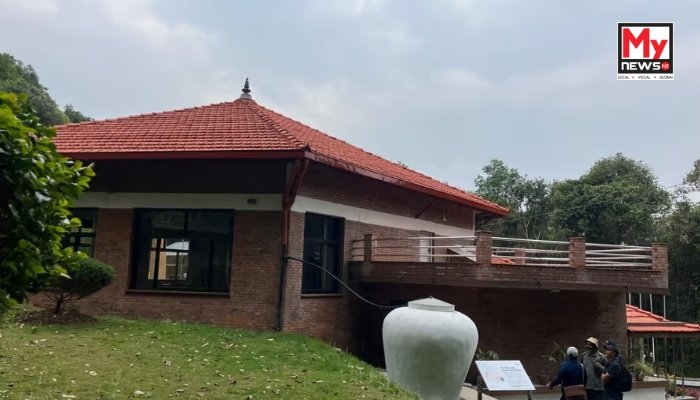
Manipur Eyes Nepal’s Green Model for Climate Resilience
Imphal: A recent eye-opening visit by a delegation of journalists and government officials from Manipur to the International Centre for Integrated Mountain Development’s (ICIMOD) Living Mountain Lab (LML) in Nepal has unveiled a trove of practical strategies for climate change adaptation, offering a potential blueprint for Manipur’s own vulnerable hill ecosystems.
The exposure, part of a media programme by the Directorate of Environment and Climate Change, brought into sharp focus innovative approaches that could revitalise the state’s degraded forest landscapes and bolster community resilience.
Nestled in the verdant Godavari hills, the 30-hectare LML stands as a testament to ecological restoration, having transformed a once-barren patch of land into a flourishing biodiversity hotspot since its establishment in 1993. The site vividly illustrates how consistent, community-driven sustainable practices can breathe new life into ailing environments.
The Manipur contingent gained firsthand insights into how forest-dependent communities in the Hindu Kush Himalaya are actively confronting the impacts of climate change, highlighting the critical role of inclusive conservation efforts in bolstering both rural livelihoods and environmental well-being.
The LML’s extensive biodiversity documentation is nothing short of impressive, cataloguing 695 wild plant species and over 300 species of fauna. This includes rare and endangered orchids such as Bulbophyllum polyrrhizum and Phalaenopsis difformis, alongside a diverse array of mammals like leopards, Asiatic black bears, and barking deer, showcasing the remarkable success of the site’s conservation initiatives.
Beyond its conservation achievements, the lab serves as a dynamic demonstration ground for sustainable mountain farming techniques. It champions accessible, low-cost, and easily replicable technologies, including integrated farming systems, solar dryers, rooftop rainwater harvesting setups, and community-operated flood early warning mechanisms.
The lab also features exhibits on earthquake-resistant construction and ingenious innovations such as the Trombe Wall, designed for passive solar heating, offering a comprehensive suite of knowledge-sharing models.
For Manipur, a state where nearly 90 per cent of its landmass is mountainous and forest degradation remains a pressing concern, the insights gleaned from the LML are particularly pertinent and timely. The visit has ignited crucial discussions around the urgent need for a bespoke mountain development policy for the state, one that places strong emphasis on community participation, robust forest conservation, and the cultivation of sustainable livelihoods.
Officials from ICIMOD affirmed that the lab, previously known as the Knowledge Park, has been a beacon for a wide spectrum of stakeholders, including government representatives, scientists, non-governmental organisations, and grassroots leaders from across the region. Its core mission remains unwavering: to empower these stakeholders with actionable models to effectively counter climate threats and foster ecological equilibrium within mountain regions.
As climate change continues to disrupt traditional rural economies and destabilise fragile ecosystems, the replicable solutions showcased at the LML could well provide Manipur with a pragmatic and sustainable pathway forward, harmonising the imperative of development with the critical need for conservation.
Read More: Arunachal: Lohit Police Nab Drug Peddler, Seize Heroin in Forest Raid
